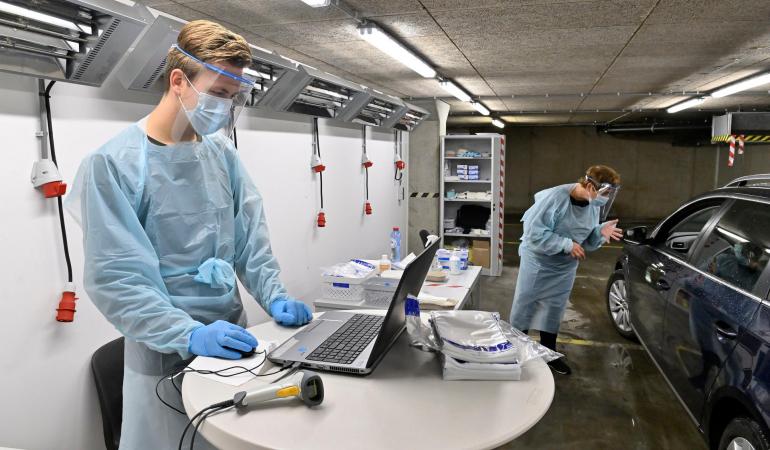
In their role as WHO reference laboratories, RIVM and Erasmus UMC conducted a study on the quality of SARS-CoV-2 antigen diagnostics in the Netherlands. The study showed that the techniques and devices (workflows) used by the Dutch laboratories and hospitals and the test lanes operated by the Municipal Public Health Services (GGDs) are performing well.
Background
Since November 2020, two types of antigen tests have been used in the Netherlands to detect the SARS-CoV-2 virus: the rapid antigen test (RAT) and the high-throughput antigen test. In their role as WHO reference laboratories, RIVM and Erasmus UMC conducted a study on the quality of SARS-CoV-2 antigen diagnostics in the Netherlands, at the request of the Ministry of Health, Welfare, and Sport (VWS). The quality control study was limited to public test sites, and did not include paid test lanes or antigen test providers that are hired by companies.
Structure of the study
The study used sets of 15 samples containing inactivated SARS-CoV-2 virus. These samples contained various concentrations and forms (variants) of the virus. One sample did not contain any virus at all. The participants did not know what was in the samples. Participating test sites examined the samples, using the brands of antigen tests that they use in their standard procedures to detect the presence of SARS-CoV-2. They provided the results to RIVM.
If more than 90% of the reported results accurately identified a sample, it was designated a core sample. If they did not, then it was designated an educational sample. The test sites that provide SARS-CoV-2 diagnostics for public healthcare use 10 different brands, 8 of which are rapid antigen tests and 2 of which are high-throughput antigen tests.
Results
The 35 test sites use a total of 44 workflows, and 43 of those workflows achieved 100% accuracy in correctly identifying the core samples. Many of the workflows were even capable of correctly detecting even lower concentrations of SARS-CoV-2 than provided in the core samples. Moreover, there was no evidence that the antigen tests currently used in the Netherlands had any problems detecting the presence of different virus variants.
Overall, the workflows used by the public test sites in the Netherlands for SARS-CoV-2 antigen diagnostics perform very well. In addition, the workflows have no difficulty detecting different virus variants.
However, the study did show that there are minor differences between the workflows regarding detection of low concentrations of virus in a sample. If a workflow involves visual assessment of the results, it can be difficult to detect the lowest detectable concentrations of the virus at all times. Proper training in visual assessment of results is therefore recommended.